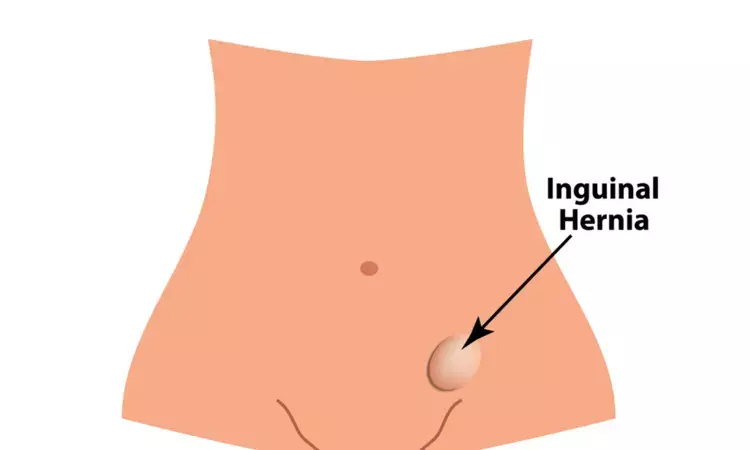- Home
- Medical news & Guidelines
- Anesthesiology
- Cardiology and CTVS
- Critical Care
- Dentistry
- Dermatology
- Diabetes and Endocrinology
- ENT
- Gastroenterology
- Medicine
- Nephrology
- Neurology
- Obstretics-Gynaecology
- Oncology
- Ophthalmology
- Orthopaedics
- Pediatrics-Neonatology
- Psychiatry
- Pulmonology
- Radiology
- Surgery
- Urology
- Laboratory Medicine
- Diet
- Nursing
- Paramedical
- Physiotherapy
- Health news
- Fact Check
- Bone Health Fact Check
- Brain Health Fact Check
- Cancer Related Fact Check
- Child Care Fact Check
- Dental and oral health fact check
- Diabetes and metabolic health fact check
- Diet and Nutrition Fact Check
- Eye and ENT Care Fact Check
- Fitness fact check
- Gut health fact check
- Heart health fact check
- Kidney health fact check
- Medical education fact check
- Men's health fact check
- Respiratory fact check
- Skin and hair care fact check
- Vaccine and Immunization fact check
- Women's health fact check
- AYUSH
- State News
- Andaman and Nicobar Islands
- Andhra Pradesh
- Arunachal Pradesh
- Assam
- Bihar
- Chandigarh
- Chattisgarh
- Dadra and Nagar Haveli
- Daman and Diu
- Delhi
- Goa
- Gujarat
- Haryana
- Himachal Pradesh
- Jammu & Kashmir
- Jharkhand
- Karnataka
- Kerala
- Ladakh
- Lakshadweep
- Madhya Pradesh
- Maharashtra
- Manipur
- Meghalaya
- Mizoram
- Nagaland
- Odisha
- Puducherry
- Punjab
- Rajasthan
- Sikkim
- Tamil Nadu
- Telangana
- Tripura
- Uttar Pradesh
- Uttrakhand
- West Bengal
- Medical Education
- Industry
Comparative Analysis of Quadratus Lumborum Block approaches in pediatric patients: Study

Various research studies have recently emphasized the integration of regional blocks alongside general anesthesia in pediatric surgeries, aiming to minimize anesthetic and analgesic needs while ensuring effective post-operative pain management and facilitating early hospital discharge. Recent research paper compared the effectiveness of two approaches for the quadratus lumborum block (QLB), a type of regional anesthesia technique, in pediatric patients undergoing laparoscopic inguinal hernia repair.
The study included 60 pediatric patients aged 1-6 years who were randomly assigned to receive either a posterior approach QLB (Group I) or an anterior approach QLB (Group II). The researchers measured several outcomes including 24-hour morphine consumption, duration of analgesia, face, legs, activity, cry, and consolability (FLACC) pain scores, and block performance time.
The results showed that the anterior approach QLB (Group II) had significantly better analgesic outcomes compared to the posterior approach. Specifically, Group II had lower morphine consumption and a longer duration of analgesia compared to Group I. The FLACC pain scores were also significantly lower in Group II at 2, 4, 6, and 12 hours post-operatively, though the scores were similar between the groups at 24 hours. Importantly, there were no block-related complications observed in either group.
The researchers concluded that for pediatric patients undergoing laparoscopic inguinal hernia repair, the ultrasound-guided anterior approach QLB provided superior post-operative pain control with reduced opioid requirements and a longer duration of analgesia compared to the posterior approach QLB. The researchers hypothesized that the anterior approach may allow for more effective spread of the local anesthetic to target the relevant somatic nerves. Overall, this study suggests the anterior QLB approach may be preferable for managing post-operative pain in this pediatric patient population.
Key Points -
Here are the 3 key points of the research paper:
1. The study compared the effectiveness of two approaches for the quadratus lumborum block (QLB) - the posterior approach and the anterior approach - in pediatric patients undergoing laparoscopic inguinal hernia repair.
2. The results showed that the anterior approach QLB had significantly better analgesic outcomes compared to the posterior approach, with lower morphine consumption, longer duration of analgesia, and lower FLACC pain scores in the anterior approach group.
3. The researchers concluded that the ultrasound-guided anterior approach QLB provided superior post-operative pain control with reduced opioid requirements and longer duration of analgesia compared to the posterior approach QLB in this pediatric patient population.
Reference –
El Malla, Dina A., El Mourad, Mona B.. Ultrasound-guided quadratus lumborum block: Posterior versus anterior approach in paediatrics undergoing laparoscopic inguinal hernia repair. Journal of Anaesthesiology Clinical Pharmacology 40(2):p 293-298, Apr–Jun 2024. | DOI: 10.4103/joacp.joacp_366_22
MBBS, MD (Anaesthesiology), FNB (Cardiac Anaesthesiology)
Dr Monish Raut is a practicing Cardiac Anesthesiologist. He completed his MBBS at Government Medical College, Nagpur, and pursued his MD in Anesthesiology at BJ Medical College, Pune. Further specializing in Cardiac Anesthesiology, Dr Raut earned his FNB in Cardiac Anesthesiology from Sir Ganga Ram Hospital, Delhi.


